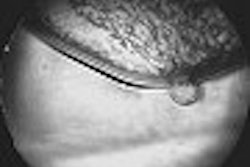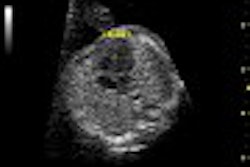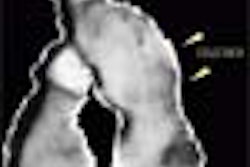(Ultrasound Review) Dynamic ultrasound is a useful method for evaluating bladder dysfunction in pediatric patients, according to a group of Brazilian radiologists and pediatricians.
While urodynamic studies are considered the optimal method for evaluating bladder dysfunction, it is an invasive study that is difficult to perform in children. Because unnatural filling is used, children are often uncooperative, which might lead to inaccuracies, wrote Dr. Maria Tereza Filguerias and colleagues in Radiology.
Using urodynamic studies as the gold standard, they compared the results for 63 patients that had both dynamic bladder ultrasound and urodynamic studies within a six-month period. Reasons for bladder dysfunction included meningomyelocele, neurogenic problems, organic abnormalities, vesicoureteral reflux, and posterior urethral valve. The median age was 7.9 years and ranged from 1.0-17.4 years.
"After natural filling of the bladder occurred, dynamic ultrasound was used to evaluate detrusor activity, determine capacity of the bladder, and estimate residual urine volume," they reported. They used the formula for an ellipsoid volume to calculate maximum bladder capacity and residual volume. Other ultrasound findings included involuntary detrusor activity, bladder wall thickness, urine leakage, and any renal or ureteric abnormality.
Results demonstrated no difference in bladder capacity comparing ultrasound and urodynamic measurements. Ultrasound was 97.7% sensitive and 100% specific for residual volume, and 100% sensitive and 97.8% specific for involuntary detrusor contraction with urine leakage. According to the authors, "detrusor contractions substantially impair the storage of urine in the bladder and may cause lesions in the urinary tract, especially when associated with detrusor-sphinctor dyssynergia and vesicoureteral reflux."
These results support their concept that ultrasound could be used for evaluating bladder dysfunction in children. Evaluation of detrusor activity should be considered an important aspect of managing urinary incontinence in children and adolescents, they concluded.
Bladder dysfunction: diagnosis with dynamic USFilgueiras, M. T. F. F., et. al.
Universidade Federal de Minas Gerais, Minas Gerais, Brazil
Radiology 2003 May; 227:340-344
By Ultrasound Review
July 28, 2003
Copyright © 2003 AuntMinnie.com



















